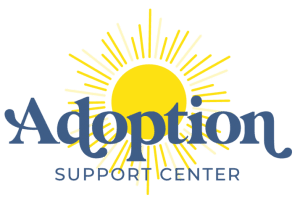It’s time to say “thank you.”
Thank you to everyone who wished me well as the news of my 20thanniversary was posted on social media in June. Thank you to all the families who have allowed me into their homes as I asked oh so many personal questions. Thank you to all the families who have allowed me to share in their joys and walk through the tough times. Thank you to all the women with whom I have cried over their loss. Thank you to all the adoptees who have allowed me to be a part of the struggle in their understanding their identity. Thank you to a great group of women who have allowed me to be vulnerable and a part of their struggles—I call you co-workers and more importantly friends. Above all, I owe a deep debt of gratitude to Maria and Shannon who had no choice in my becoming their mother, but are the embodiment of family.
There. The mushy stuff has been said. It’s heartfelt, but let’s move on.
I first began working for ASC in 1994. After a five year hiatus from 2004-2009, I have been back and immersed in the work of adoption. Looking back at 25 years, I have been struck by a few things.
The mechanics of the process have changed.
Oh, sure, families still need a home study to adopt a child. The basic requirements of what is in that home study have varied slightly, but not by much. As an agency and a professional social worker, my goal continues to be to help families think about what it means to raise a child—not just get a baby. Expectant moms still consider making an adoption plan because they believe they are unable to provide the care they believe their child needs and deserves at that time in her life.
Expectant parents used to connect with potential adoptive parents by reading classified ads in newspapers. Newspapers are now going the way of the dinosaurs. The agency’s advertising budget relied heavily on Yellow Page ads. Packets sent to expectant moms used to include a “Dear Birth Mom” letter accompanied by a very brief biography. Adoption coordinators would take scrapbooks of families with whom the expectant moms thought they might be interested. Expectant and adoptive families would meet once or twice before placement, but have very little contact before the baby was born.
After the adoption was finalized when I first began working at ASC, families would send letters and photos to the agency to forward on to their child’s birth family. Every piece of correspondence would be photocopied and placed in the adoptive family’s file. It quickly became apparent that we would not have enough storage to do this indefinitely.
Post placement visits were extremely rare. So were transracial adoptions.
So many changes.
What hasn’t changed are the feelings underneath it all.
At it’s heart, I’ve learned that adoption is about connection. Birth parents are looking for a connection to the family who will raise their child. Adoptive parents are looking for a connection with their child’s birth family so that they can provide their child with a solid foundation from which they can grow. And adoptees are looking for connection to the people who gave them life—both in the physical and emotional senses.
So once again, thank you. Thank you all for allowing me to connect with you.
Diane



